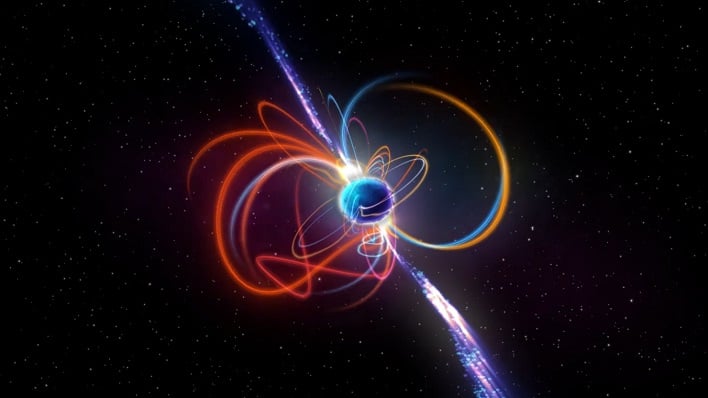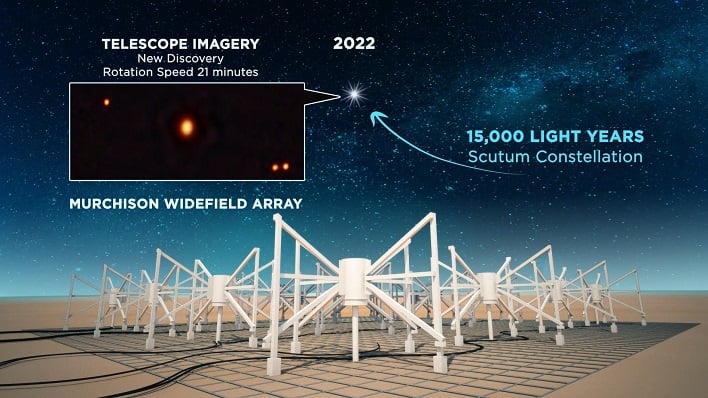Astronomers Discover A Mysterious Radio Signal In Space Pinging Every 22 Minutes

Magnetar GPM J1839-10 is located approximately 15,000 light-years away from Earth in the Scutum constellation. It is only the second of its kind to ever be found, with the first being detected by Curtin University undergraduate research student Tyrone O'Doherty.
"This remarkable object challenges our understanding of neutron stars and magnetars, which are some of the most exotic and extreme objects in the Universe," remarked the lead author of a study published in Nature, Dr. Natasha Hurley-Walker.
The paper describes an "enigmatic transient object" that would appear and disappear intermittently. The potent beams of energy were emitted three times per hour. Hurley-Walker said the discovery took the team by surprise.
"We were stumped," explained Hurley-Walker. "So we started searching for similar objects to find out if it was an isolated event or just the tip of the iceberg."
The team began searching the sky for similar objects between July and September 2022 utilizing the MWA telescope. The team didn't take long to detect what they were looking for in GPM J1839-10. This stellar object emitted bursts of energy that last up to five minutes, which is five times longer than the first object that was found.
Follow-up discoveries from other telescopes confirmed the discovery surrounding the object's unique characteristics. The other telescopes included three CSIRO radio telescopes in Australia, the XMM-Newton space telescope, and the MeerKAT radio telescope in South Africa.
Even more surprising was the fact it showed up in observations by the Giant Metrewave Radio Telescope in India, and the Very Large Array in the United States, dating back to 1988.
"That was quite an incredible moment for me. I was five years old when our telescopes first recorded pulses from this object, but no one noticed it, and it stayed hidden in the data for 33 years," remarked Hurley-Walker. She added, "They missed it because they hadn't expected to find anything like it."
The new discovery is important for understanding the physics of neutron stars and the behavior of magnetic fields in extreme environments. It could also help astronomers better understand the origin of enigmatic phenomena like fast radio bursts (FRBs). The team plans to conduct further observations of GPM J1839-10 to learn more about its properties and behavior.


